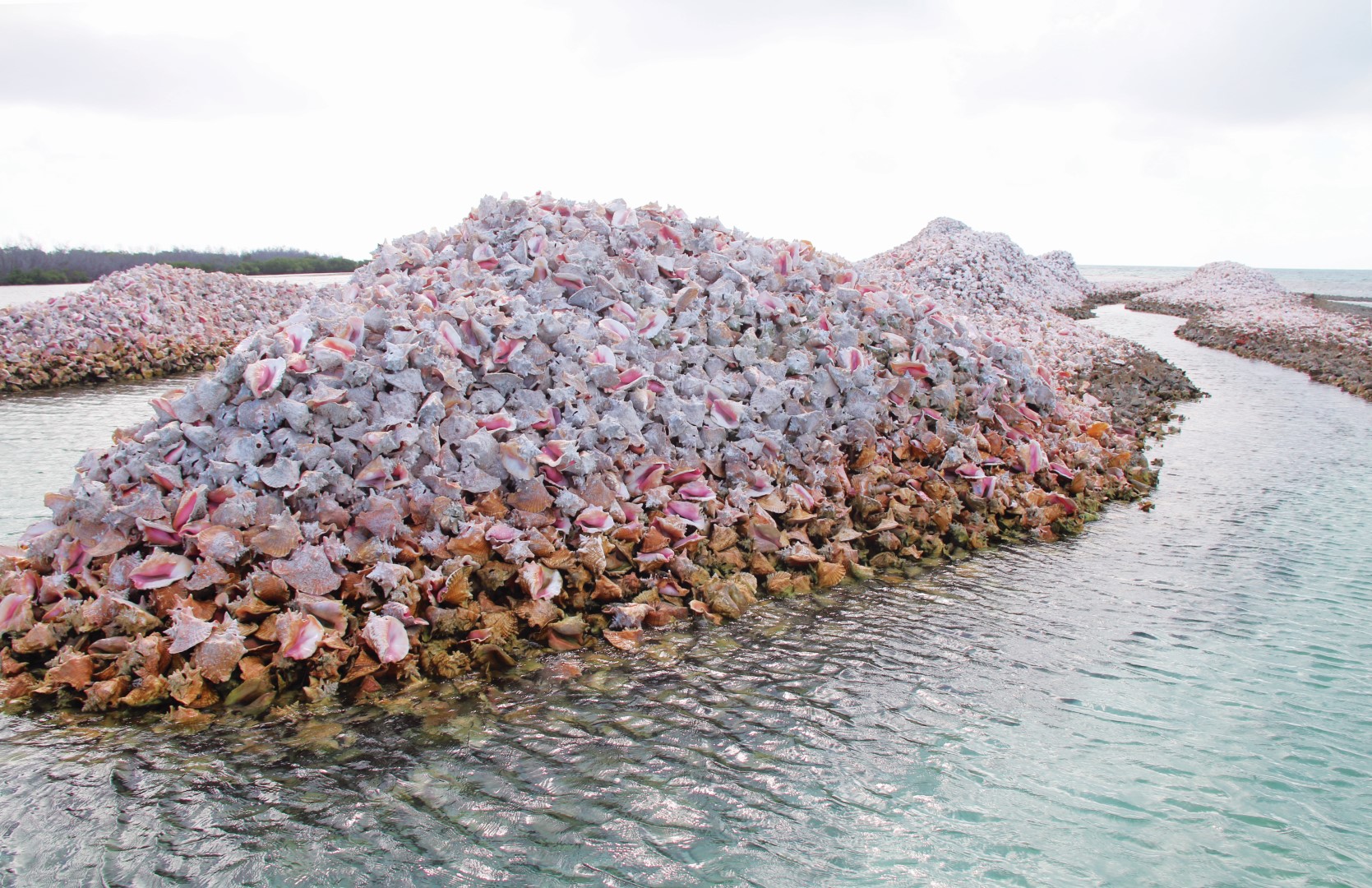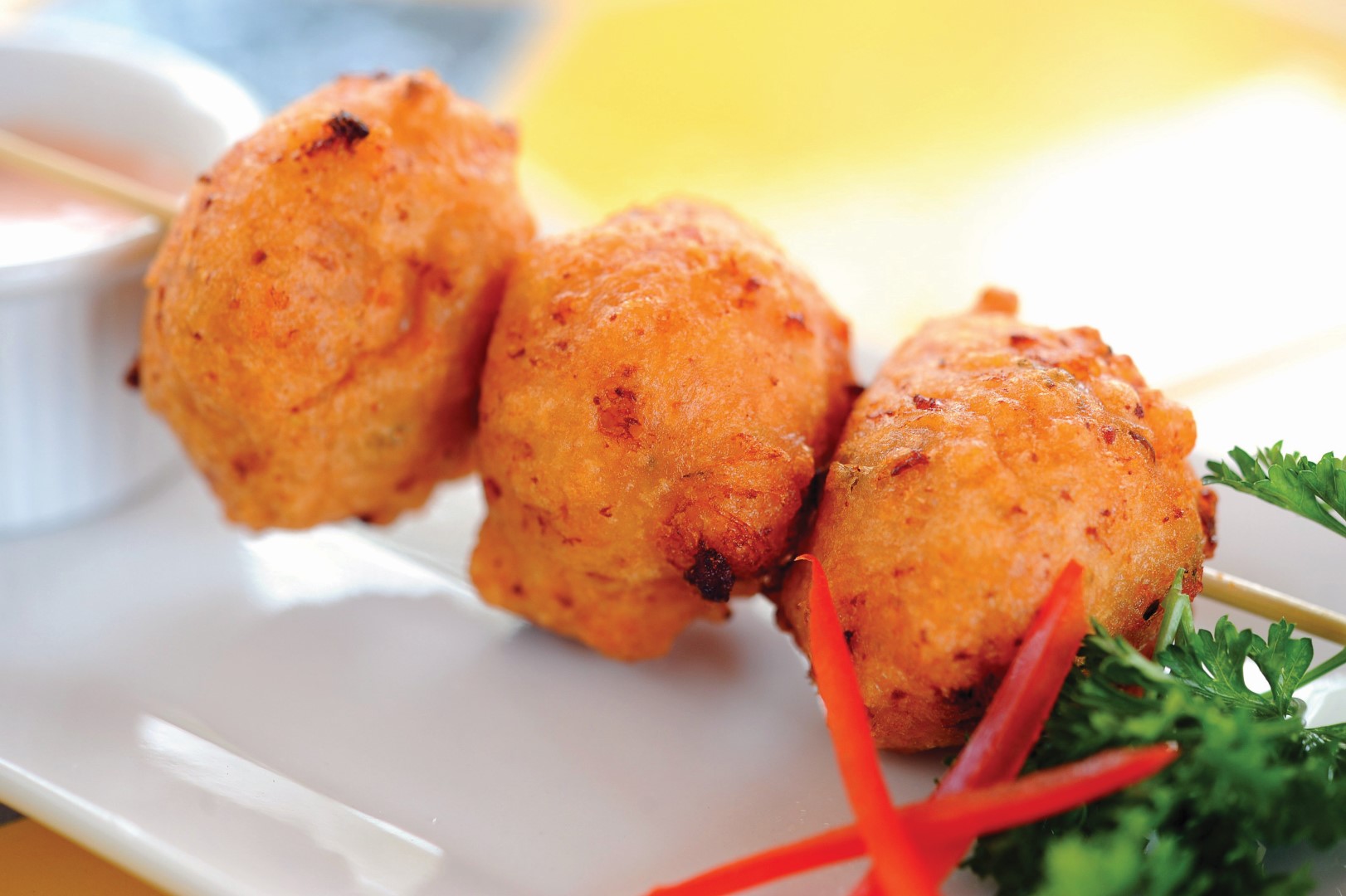Share
In the British Virgin Islands, one of the exotic dishes that people come to enjoy is The Strombus Gigas or the Queen Conch as it is commonly called. It has almost the same notoriety as lobsters and is a favourite amongst many islanders. If you have an allergy for sea food please avoid conchs at all cost. For those who find fish to be one of the healthier food choices unless you are vegan, the health benefits of conchs are well known.
The Queen conch is a species of a large sea snail, usually placed in the mollusk family. They are herbivores and eat mostly algae and other tiny marine plants. Besides us humans, the conch’s main predators include other crustaceans, other snail species, and nurse sharks to name a few.
They are a popular dish in restaurants, so the Queen conch is vulnerable to overfishing because they are relatively slow to grow, late to mature, and are easily harvested in shallow waters. With its popularity, at times it is necessary to harvest them from the deep. Hence the closed season in the British Virgin Islands is 15th August – 31st October every year.
Why are they so sought after? Conchs are considered an aphrodisiac1. On many videos and Instagram pages you can see persons consuming it in different dishes. It is also a good low-fat source of protein; high in vitamins E and B12, magnesium, selenium, and folate, but fair warning, it is also high in cholesterol; so if you are already on a cholesterol restricted diet please check with your physician on its consumption.

The conch mound in Anegada is a testimony to how much has been harvested for decades and most boys growing up in the fishing villages around the island knew how to use the conch shell to make a horn and how to blow it. Even today, the familiar sound of the conch shell being blown, herald persons to seek out the popular drop off points to buy fish.
It is time consuming to clean conchs and make them ready for consumption, but the dishes that come from it makes it worth the time and effort. How do you prepare it, you might ask? Well, extract the conch from its shell. To do this, you should create a hole right below the second set of small horns from the top of the shell using a chipping hammer or regular hammer to crack the shell. Then use a butter knife and slide it under the meat of the conch to loosen it so it slides out. If not, you can turn the shell over and grab its operculum (commonly called its feet or horn) and gently pull the meat out. Once extracted, you are left with the meat and guts.
Conch meat has two parts – A white part that is ready to be used; A darker outer skin called the tail that hangs from it and a pouch that looks like a pocket attached to the muscle on it, with the conch eyes. The conch’s operculum should be disposed of. Remove by using a sharp knife and cutting at the base of the conch’s muscle. This part is very slimy and once detached, leaves behind the muscle or meat of the conch and eyes. Cut the eyes off at the base at which they are attached. Remove the darker skin by trimming it away being careful not to cut yourself. Look carefully, after the skin is removed, there is a distinct cord that starts from the white part that is ready to use, straight up to where the eyes were detached. Once identified, a cut is made along this cord, to remove it from the conch’s muscle. At this stage, the conch is ready to be tenderized using a meat tenderizer. You ever heard the term tough as an old shoe, it will be if it is not tenderized before fixing your favorite dish.
Pound the conch meat until it resembles a chicken cutlet using a rolling pin for this purpose. Another technique is to boil it in salted water for an hour–it will soften up as time passes; after this the meat can be pressured or boiled to the decided texture.
Remember conchs are fishy in nature and slimy so take care to wash it properly. Add a touch of vinegar and salt in the water. Rub rigorously with the lime to loosen the slime. Your meat is now ready to be used. We have provided a conch fritter recipe to try. It is recommended for true island flavor; the conch should be cooked outside on a three stone fire.
https://www.youtube.com/watch?v=4S–Pxjb5eo
COOKING CONCH FRITTERS
INGREDIENTS
- 1cup chopped conch
- 3⁄4cup all-purpose flour
- 1egg
- 1⁄2cup milk
- ground cayenne pepper, to taste
- red pepper flakes, to taste
- seasoning salt, to taste
- salt, to taste (optional)
- ground coarse black pepper, to taste
- 1⁄2onion, chopped
- 1⁄4green bell pepper, chopped fine
- 2 stalks celery and garlic cloves, chopped fine
- Baking powder 1 pinch
DIRECTIONS
- Heat the oil in large pot or deep fryer to 365F (185 degrees C).
- Mix in the conch meat, onion, red & yellow & green pepper, celery and garlic. Season with cayenne pepper, seasoning salt, salt, pepper and red pepper flakes. Add the flour, baking powder, eggs and milk, stir thoroughly.
Drop the batter by rounded tablespoons into the hot oil and fry until golden brown. Remove from the oil with a slotted spoon and drain on paper towels. Let them cool before consuming. BE CAREFUL!
Making & blowing a conch horn.
If you were not fortunate growing up to have a conch shell horn as your very own, you might want to make one to tell your grandchildren about. Find a conch shell on the beach.
Look for cracks or holes in the shell. A lot of shells have large holes in them; try to find one that has one or two small holes that can be easily covered.
Make sure you can comfortably hold the shell with one hand. The shell should make it slightly quieter.
Clean any dirt or debris off the shell. Find the third curl from the top of the shell and cut off the top of the shell’s crown at this point. This creates a mouthpiece where you can put your lips to blow. The hole should be between the diameter of a dime or a quarter depending on the size of the conch shell. To blow the conch shell, put your lips to the hole at the top of the conch shell and pucker them tightly. Breathe in deeply from your stomach and blow out forcefully through your lips causing them to vibrate. The pitch can be adjusted by loosening your lips or moving your tongue.
https://www.youtube.com/watch?v=ebzN79oNTJg
Now that you have made your conch shell horn and learn how to blow it, find your favorite bottle of wine or soft drink, grab a chair, and enjoy your freshly prepared conch fritters.

Credit
Conch – Aphrodisiac & Health Benefits – Eat Something Sexy
https://www.eatsomethingsexy.com › aphrodisiac-foods




